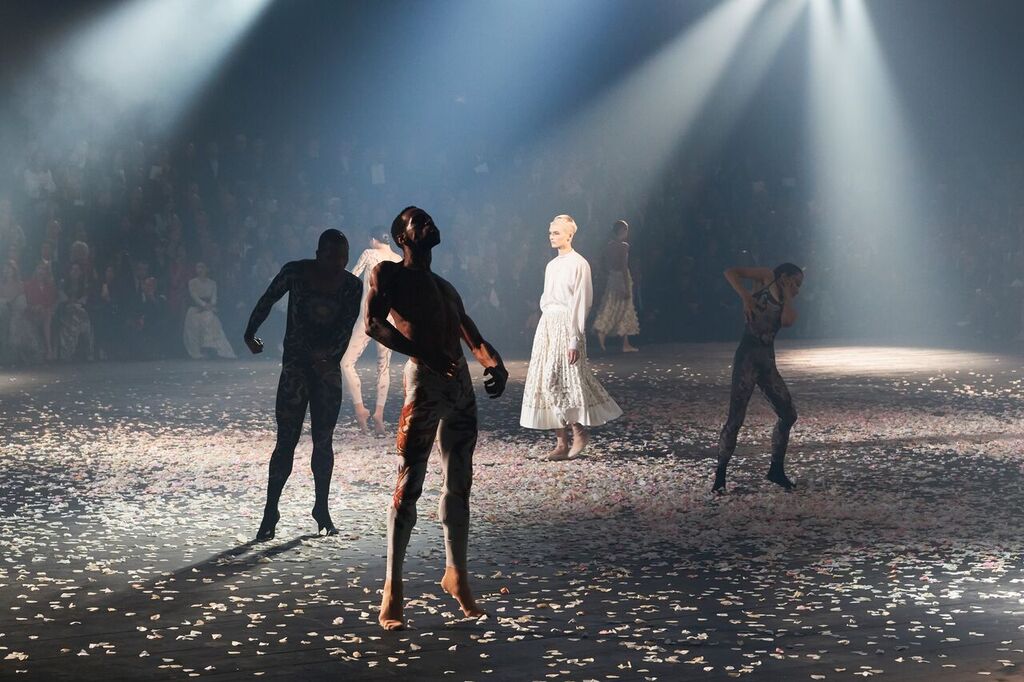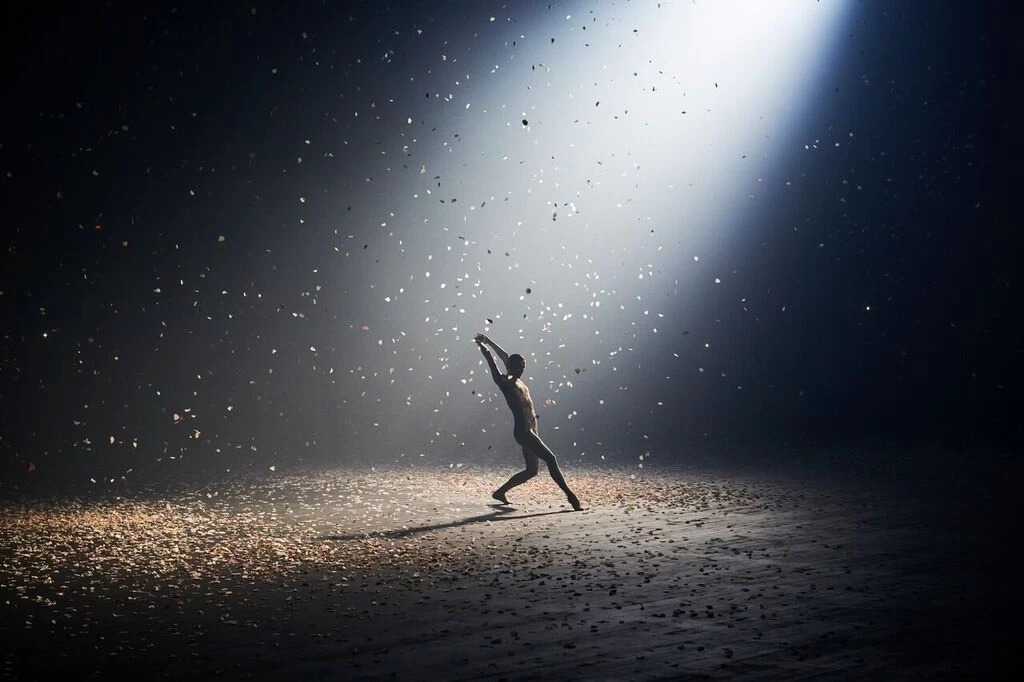This story originally appeared on i-D France.
We expected to be listening to hooves beating on the boards of the Longchamp Racetrack. But Maria Grazia Chiuiri had a different idea in mind. The echoing sounds bursting from the near-opaque darkness of the place came from the kicks of dancers, perched on their ballet slippers like magical centaurs. Faithful to the feminine trope she has been sticking to since her debut at Dior — who could forget the famous t-shirt stamped with “we should all be feminists,” or her tribute to Niki de Saint Phalle — the head designer of the French house presented her new collection along with Israeli choreographer Sharon Eyal. Like her mentor, dancer and choreographer Ohad Nahirin, Eyal seeks to liberate the bodies of her disciples and throws the doors of contemporary dance wide open.
“The story comes from within your body.” Written at the entrance to the show, this new motto set the tone for an exceptional collaboration and sealed an all-powerful alliance. It floated in the midst of other quotes by the likes of Isadora Duncan, Pina Bausch, and Martha Graham, choreographers who have also strived, in their own characteristic fashion, to liberate dancers by relying on their impulses and amplifying their gestures to better rid them of the relics of past orthodoxy. But Sharon Eyal displays a particular intensity. She has the gift of convulsing bodies; both those of her dancers and those of her spectators. Her choreography grows tense before tilting at exactly the right moment — a perfect timing that allows the sequence to rupture. i-D spoke to Eyal, still catching her breath, in the parade’s backstage area.

What was your reaction when Maria Grazia Chiuri asked you to choreograph her show?
I was delighted. I have a deep admiration for Maria Grazia Chiuri. Her vision of fashion and clothing is very impressive. Our relationship and the connection established between us from our first meeting were very intense. There is a lot of chemistry between us: in a way, it seems that we’re going in the same direction, but with our own approaches. In the frame of this collaboration, we shared an identical desire for sincerity. The will to express something that came from deep within us. She designs what she feels. And I dance what I feel.
How did you approach the show as a space for creation?
At the end of the day, fashion is not a creative setting so different from the one in which I usually produce choreographies. Maria Grazia Chiuri gave me a space for composition and reflection and she completely trusted me. This freedom is the same as that found in her collections, in the way she designs fashion. It’s a very natural freedom.
The interactions between the models and the dancers seemed natural, as if they were all part of the same world…
The relationship between the two “bodies” was instinctively established. The models and dancers shared a space, but one group did not disturb the balance or the trajectory of the other. There was no need to do too much. Everything is balanced on the tension, on the timing of the interactions, on the path and the connections which either are or aren’t created between the dancers and the models. The linear trajectory of the mannequins is very graphic in terms of staging and use of space. At the same time, I work a lot with walking when I choreograph a dance piece. The walking and the guise of the models can be considered as dance.

What kind of relationship do you have with fashion?
Fashion inspires me a lot. Its lines, its textures, and the system of thought that it creates have always influenced the way I choreograph dance.
You danced for many years in the Batsheva Dance Company, directed by Ohad Naharin, the founder of the Gaga movement. How do you carry on this legacy nowadays?
Gaga has become my language. It’s a technique that feeds dancers with a lot of emotions. The Gaga language is also very physical. It allows one to find the strength for a motion within the vulnerability of the body and its weaknesses. There is a real sense of tension in Gaga: everything depends on the tensions between rhythms and energies and everything is woven around a crescendo which finds its climax at a perfect timing.
What does timing mean to you?
It’s a chimera. An elusive notion. It’s very interesting to look for this timing when you’re a choreographer. For me it’s about understanding how things, ideas, and gestures happen in a precise moment. It is in this moment that we can then allow ourselves to unravel and deconstruct. Timing comes only through order but is only accomplished in freedom.
An impressive physicality comes out in your shows, and the audience rarely leaves unaffected. We often see people moving and dancing on the seats of theaters where you show your performances…
I always try to make the audience open up, physically. I work with the body, so inevitably, I like the bodies in front of us to respond. Beyond movement, music plays a key role in this relationship with the audience. The heavy bass and the variations of rhythms and repertoires are also very important. I work with musician Ori Lichtik, who is an old friend if mine and who I greatly admire. He knows how to reach the audience. Make them buzz.
If dance had a universal message, a meaning, what would you say it was?
I think that dance can relieve us of many things. It strengthens the connections that are made between us all. For me, dancing enables you to love others.
